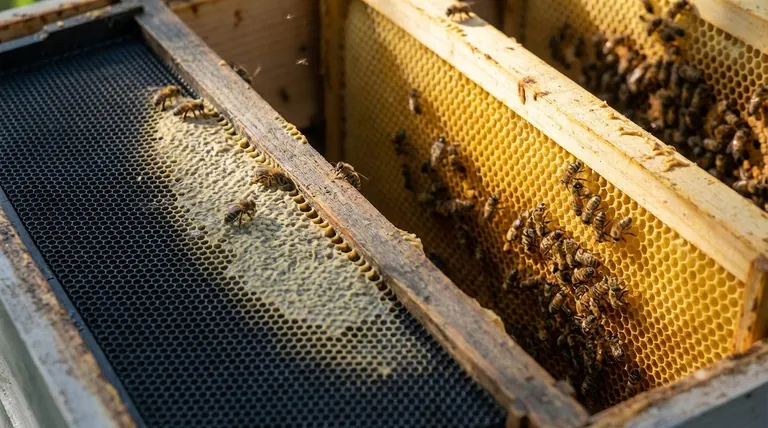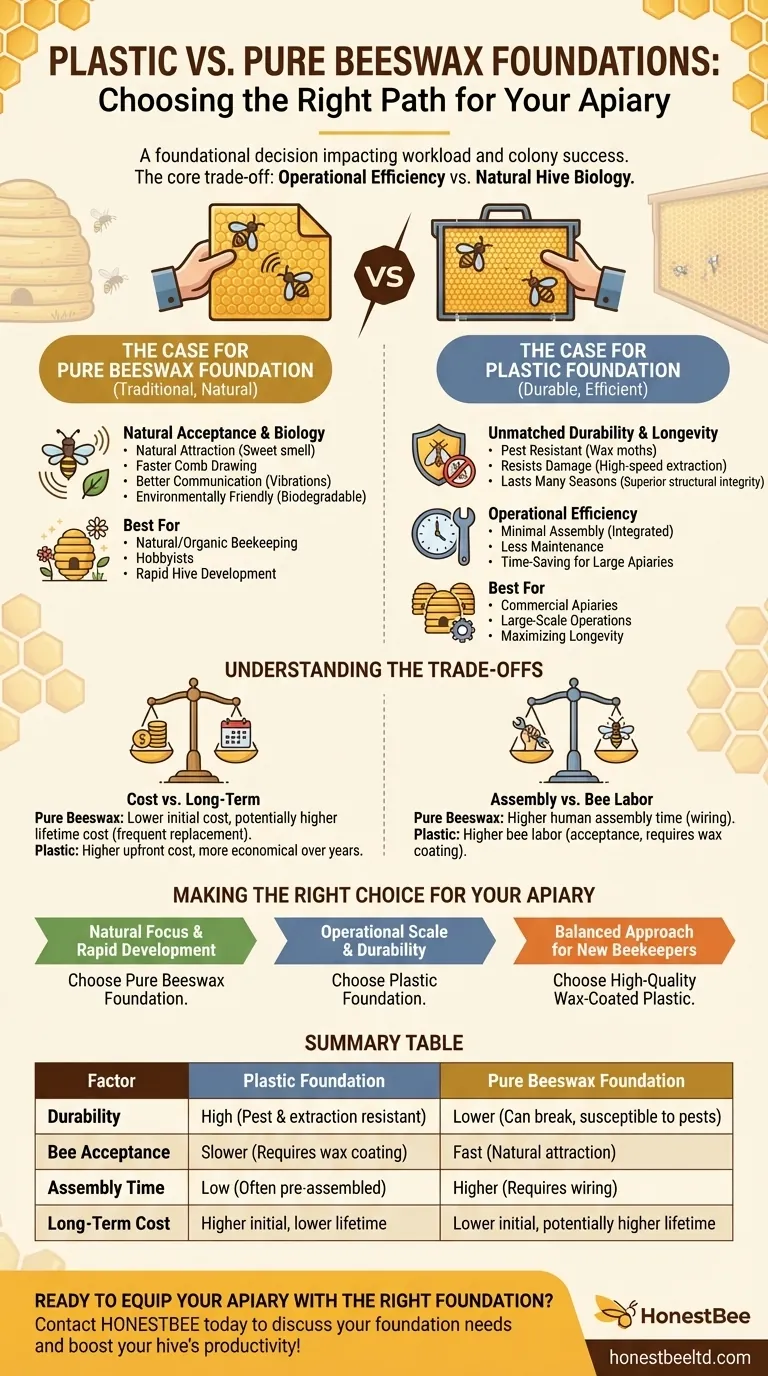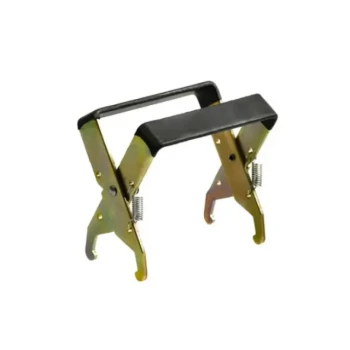Choosing the right foundation for your hive is a foundational decision in beekeeping, directly impacting both your workload and your colony's success. The choice between plastic and pure beeswax foundation hinges on four key factors: durability, bee acceptance, assembly time, and long-term cost. Each material offers distinct advantages that cater to different beekeeping philosophies and operational scales.
The core decision is a trade-off between operational efficiency and natural hive biology. Plastic foundations offer superior durability and ease of use, while pure beeswax foundations provide faster colony acceptance and align more closely with the bees' natural processes.

The Case for Pure Beeswax Foundation
Pure beeswax is the traditional material for foundation and is often favored by beekeepers who prioritize a more natural approach. Its primary advantage lies in its immediate compatibility with the colony.
Natural Acceptance and Biology
Beeswax is a material bees produce themselves. A pure beeswax foundation has a familiar, sweet smell that naturally attracts the colony, encouraging them to begin drawing out comb quickly.
Some evidence suggests beeswax allows for better communication within the hive. Bees use vibrations to communicate, and the natural properties of wax may transmit these signals more effectively than rigid plastic.
Environmental Considerations
As a natural product, beeswax is fully biodegradable and environmentally friendly. This aligns with the goals of many hobbyist and organic beekeeping operations.
The Case for Plastic Foundation
Plastic foundation was developed to solve common structural and maintenance issues associated with pure beeswax. Its benefits are centered on durability and long-term efficiency.
Unmatched Durability and Longevity
Plastic foundation is exceptionally durable. It resists damage from pests like wax moths and is less prone to breaking during honey extraction, a common issue with wax foundation in high-speed extractors.
This structural integrity means plastic foundations can last for many seasons, often outliving their beeswax counterparts significantly.
Operational Efficiency
For beekeepers managing numerous hives, time is a critical resource. Plastic foundations, especially those integrated into plastic frames, require minimal to no assembly.
They also demand less maintenance over time due to their resistance to degradation, making them a practical choice for commercial or large-scale apiaries.
Understanding the Trade-offs
Neither foundation type is perfect; the optimal choice depends on which compromises you are willing to make. Understanding these trade-offs is key to avoiding frustration.
Cost vs. Long-Term Investment
Pure beeswax foundation often has a lower initial cost per sheet. However, because it is less durable, it may need to be replaced more frequently, potentially leading to higher costs over the lifetime of the hive.
Plastic foundation may have a higher upfront cost but its longevity often makes it a more economical investment over several years.
Assembly Time vs. Bee Labor
With pure beeswax, the beekeeper invests more time upfront in assembling and wiring it into frames. With plastic, the bees may need to invest more time and energy to fully accept and draw out the comb, even when coated with wax.
Bee Acceptance is Key
While bees will eventually draw comb on both types, they almost universally accept pure beeswax foundation more readily. Plastic foundations must be coated with a layer of beeswax to encourage the colony to work on them. The quality and thickness of this coating can vary, directly impacting acceptance rates.
Making the Right Choice for Your Apiary
Your specific goals should guide your decision. Once the bees have drawn out the comb, a colony can thrive on either foundation type.
- If your primary focus is natural beekeeping and rapid hive development: Pure beeswax foundation is the superior choice as it encourages faster comb building and aligns with the hive's biology.
- If your primary focus is operational scale, durability, and minimizing labor: Plastic foundation offers significant advantages in longevity, pest resistance, and reduced maintenance.
- If you are a new beekeeper seeking a balance: High-quality, wax-coated plastic foundation can provide a forgiving and durable starting point that still encourages bee acceptance.
Ultimately, the best foundation is the one that aligns with your beekeeping philosophy and your operational capacity.
Summary Table:
| Factor | Plastic Foundation | Pure Beeswax Foundation |
|---|---|---|
| Durability | High (pest & extraction resistant) | Lower (can break, susceptible to pests) |
| Bee Acceptance | Slower (requires wax coating) | Fast (natural attraction) |
| Assembly Time | Low (often pre-assembled) | Higher (requires wiring) |
| Long-Term Cost | Higher initial, lower lifetime | Lower initial, potentially higher lifetime |
| Best For | Commercial apiaries, large-scale operations | Natural/organic beekeeping, hobbyists |
Ready to equip your apiary with the right foundation?
At HONESTBEE, we supply durable, high-quality beekeeping supplies and equipment tailored for commercial apiaries and beekeeping equipment distributors. Whether you need the long-lasting efficiency of plastic foundations or the natural appeal of pure beeswax, our wholesale-focused operations ensure you get the best value and performance for your operation.
Contact HONESTBEE today to discuss your foundation needs and boost your hive's productivity!
Visual Guide

Related Products
- Food Grade Plastic bee Foundation for Bee Frames
- Notebook Style Beeswax Foundation Mould Wax Foundation Mold
- Beeswax Foundation Sheets Beehive Foundation for Wholesale
- Manual Beeswax Comb Foundation Machine Wax Foundation Mill Embossing Machine
- Colorful Silicone Beeswax Foundation Mold Mould for Beekeeping
People Also Ask
- Why is it beneficial to coat plastic foundation with beeswax? Boost Hive Acceptance & Comb Building
- How to get bees to draw out plastic foundation? Boost Comb Building with Proven Tactics
- Why do commercial beekeepers prefer plastic foundation? Durable, Reusable, and Cost-Effective
- Does plastic foundation affect honey quality or taste? A Practical Guide for Beekeepers
- What additional step can improve the performance of plastic foundation in the hive? Apply a Generous Coat of Beeswax



















